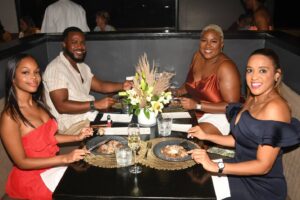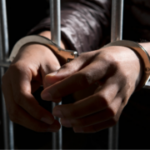
The Power of Resilience: From Learned Helplessness to Garvey’s Vision
By Geoffrey Philp
Imagine a room with five chimpanzees, a ladder, and ripe bananas at the top. This thought experiment, inspired by psychologists Martin Seligman and Steven Maier’s work on learned helplessness, illustrates how conformity and social control can develop.
When one chimpanzee tries to climb the ladder to reach the bananas, the researchers douse all the chimpanzees with cold water. After several attempts and dousing, the elder chimpanzees learn to avoid climbing the ladder. They give up and sit in a corner, angry, fearful, and depressed. When one of the original chimpanzees is replaced with a new one who does not know the rules and attempts to climb the ladder, the others, aware of the consequences, pull her down and prevent her from climbing. Some even beat the newcomer for trying, then retreat to a corner where they remain angry, fearful, and depressed. Gradually, all the original chimpanzees who experienced the repeated dousing are replaced with new ones. Although none of the newcomers have personally experienced the spray, they’ve learned the futility of even trying and prevent any other chimpanzee from climbing the ladder that dangles over their heads within arm’s reach.
If you substitute freedom for bananas — acknowledging the potential for offensive implications — this was the condition in which Marcus Garvey found “Africans at home and abroad” when he established the UNIA-ACL in Jamaica and later travelled to the USA, where he established a branch in Harlem.
To fully grasp the significance of Garvey’s work and the depth of the challenge he faced, we can examine his efforts through the lens of Dr David R Hawkins’ Map of Consciousness. Hawkins introduced this model in Power vs Force (1995), using kinesiological testing to calibrate levels of consciousness by measuring the body’s response to stimuli, and then categorising human consciousness into levels from 0 to 1,000, each reflecting distinct emotions, behaviours, and perspectives.
During his travels throughout the Caribbean, South America, Europe, and the USA, Garvey found black people trapped in lower levels of consciousness — shame, guilt, apathy, and fear. Garvey observed that these emotions kept them chained both individually and collectively in “mental slavery” as he called it. Even after emancipation in the USA, the white patriarchal power structure legalised oppression and with the terrorist activities of the Ku Klux Klan reinforced and perpetuated the fear and shame that many of our ancestors (if they were lucky?) spent their three score and 10 years. (See table attached.)
This was why Garvey’s mission was so crucial.
He aimed to elevate black people to higher levels of consciousness where positive emotions and constructive actions dominate. Garvey’s work with the Universal Negro Improvement Association (UNIA) sought to instil pride, self-reliance, and a vision of a prosperous future among black people. By encouraging us to see black skin not as a “badge of shame” but as “a glorious symbol of national greatness,” he aimed to elevate our collective consciousness. His speeches and actions were designed to inspire and mobilise, pushing against the entrenched negativity imposed by systemic oppression.
So, it came as no surprise that when Garvey tried — using one of his fond phrases — to “uplift” our people “industrially, commercially, socially, religiously, and politically,” the elites in Jamaica and the US tried every means necessary to stop him. They almost succeeded when George Tyler tried to assassinate Garvey in his Harlem office, but he was foiled by the bravery of Amy Ashwood Garvey. Then, in a strange turn of events, Tyler who, after his arrest by the police, miraculously escaped their clutches, and committed suicide by jumping out of the second floor of the station.
The assassination attempt on Garvey’s life was the classic “kill the dreamer” scenario, but Garvey never gave up. This is why, after being sentenced on trumped-up charges of mail fraud and being taunted that he, the “Tiger,” was finally caged, Garvey could reply, “But my cubs are running free.” Or similarly, he could say in his speech before his imprisonment in the Atlanta Federal Penitentiary, “If I die in Atlanta my work shall then only begin, but I shall live, in the physical or spiritual to see the day of Africa’s glory. When I am dead, wrap the mantle of the Red, Black, and Green around me, for in the new life I shall rise with God’s grace and blessing to lead the millions up the heights of triumph with the colours that you well know. Look for me in the whirlwind or the storm, look for me all around you, for, with God’s grace, I shall come and bring with me countless millions of black slaves who have died in America and the West Indies and the millions in Africa to aid you in the fight for Liberty, Freedom, and Life.”
They tried to kill the dreamer, but they could never kill Garvey’s dream of emancipation from “mental slavery” which we inherited when we named him as our first National Hero. But how do we nurture the seeds of joy, serenity, and reverence that Garvey planted when he wrote in his blueprint for freedom, The Philosophy and Opinions of Marcus Garvey?
Again, Garvey has left us a clue: “Education is the medium by which a people are prepared for the creation of their own particular civilisation, and the advancement and glory of their own race.”
May we prove ourselves to be worthy inheritors of his legacy.
Geoffrey Philp is the author of the novel Garvey’s Ghost and the children’s book Marcus and the Amazons. His awards include a Silver Musgrave Medal from the Institute of Jamaica, Marcus Garvey Award for Community Service from the Rootz Foundation, Marcus Garvey Excellence Award and Luminary Award from the Consulate of Jamaica in Miami, and the Daily News Prize from the Caribbean Writer. Philp’s poem A Prayer for My Children is featured on The Poetry Rail — an homage to 12 writers who shaped Miami’s culture. He is working on a book of poems, Letter from Marcus Garvey, and is anticipating the release of his graphic novel My Name is Marcus on September 15, 2024.























